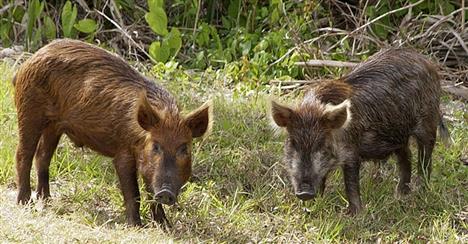Livestock and Poultry Commission allows for airborne feral hog eradication
by June 17, 2019 5:14 pm 665 views

Feral hogs have been a problem for Arkansas landowners in recent years and another step has been taken to remove the unwanted and sometimes dangerous wildlife.
The Arkansas Agriculture Department’s Livestock and Poultry Commission has approved proposed rules that would allow the issuance of permits for the use of aircraft in the eradication of feral hogs. Feral hog airborne eradication permits may only be used for the protection of land, water, wildlife, livestock, domestic animals, timber, human life, or crops.
It is estimated that feral hogs are now in every county in Arkansas. The Arkansas Feral Hog Eradication Task Force was established by the Arkansas General Assembly in 2017 for the purpose of creating a plan for the eradication of feral hogs in Arkansas. Task force members include a broad range of stakeholders that have an interest in eradicating feral hogs.
The creatures have an estimated total national population between four and five million in 39 states. It is estimated feral hogs cause $1.5 billion annually in agricultural and ecological damage, according to the U.S. Department of Agriculture.
Feral hogs are not native to the United States. They are an invasive species, a public nuisance and a threat to Arkansas, according to the Arkansas Game and Fish Commission. They compete for food resources, destroy habitat by rooting and wallowing and will eat ground-nesting birds, eggs, fawns and young domestic livestock.
They also carry up to 45 bacteria, diseases and parasites, including Trichinellosis, Brucellosis and swine herpes virus.
Hunting and shooting feral hogs has been implemented for the last few decades. It can chase feral hogs away from crops or food plots temporarily, but they return or become a problem for a neighboring landowner. Studies show at least 66% of a hog population must be removed each year just to prevent it from growing. Hunting has shown to reduce hog populations by up to 50%.
The commission also approved proposed rule changes to the Disbursement of State Funds for Fairs and Livestock Shows Program. The rule changes include moving the deadline for submission of application forms from May 30 to March 1, and authorizing a method of allocating surplus construction funds.
